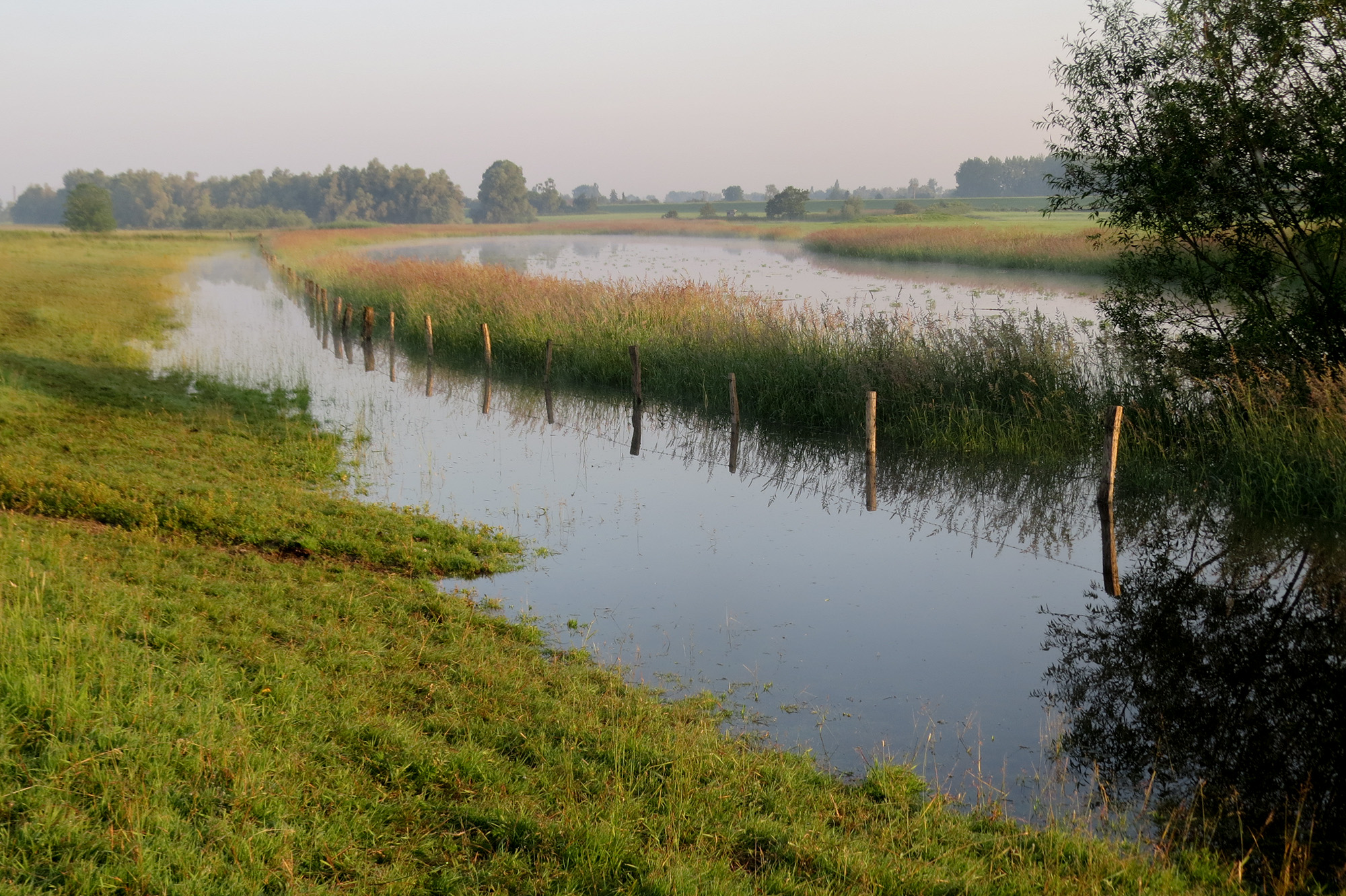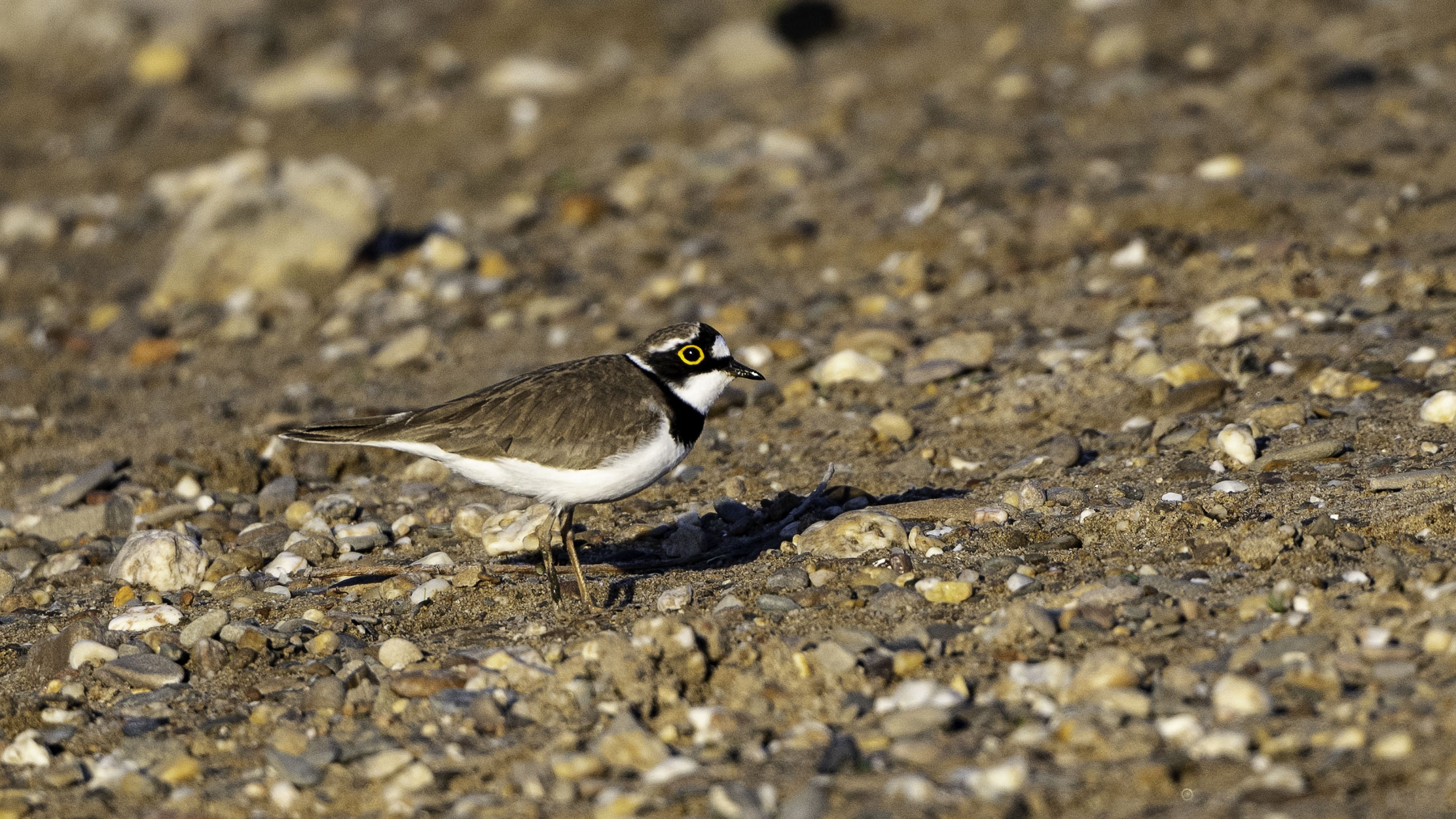News
Solar-powered irrigation in use for the first time
- Details
This spring, active irrigation is needed for the first time since it was set up in the Emmericher Ward, as there is hardly any water left in the flood basins unusually early in the year. Thanks to the efforts of our volunteers, the pumps are now switched on and can supply the wetlands with water. Since last year, the new irrigation system consisting of solar-powered pumps has been available in the Emmericher Ward. Pumped-up water can be distributed in the area's flood troughs via pipes laid above ground. This is a closed circuit: The water is pumped up from the ground and seeps back into it.
 The newly activated pumps distribute water to flood troughs in the Emmericher Ward. (© NABU-Naturschutzstation Niederrhein)
The newly activated pumps distribute water to flood troughs in the Emmericher Ward. (© NABU-Naturschutzstation Niederrhein)
 (© NABU-Naturschutzstation Niederrhein)
(© NABU-Naturschutzstation Niederrhein)
Solar-powered irrigation successfully commissioned
- Details
The solar-powered irrigation system is ready for use. At two selected flood channels, it can maintain areas with moist soils and open mudflats as feeding habitats—particularly for meadow birds—well into late spring. This is a bridging measure until more fundamental improvements to the landscape’s water management in the Rhine floodplain take effect.


Monitoring success through fish counts
- Details
In August, a comprehensive survey of fish stocks was conducted in the restored floodplain waters. “The initial results are promising,” says Klaus Markgraf-Maué, project manager and board member of the NABU-Naturschutzstation Niederrhein. “We observed high fish densities, indicating that the measures are effective. Now, it’s important to continue monitoring and optimizing the development of these habitats.” This success assessment is being carried out by experts from Limnoplan, who record, count, and measure the fish by species. “The data gathered provides valuable insights into the role of these waters in the fish life cycle and will help us tailor future measures even more effectively,” adds Markgraf-Maué.


Encouraging growth in the oxbow lake
- Details
Around the oxbow lake restored last summer at the center of the nature reserve, a lush stand of flowering rush has developed, extending into the water with clusters of water dropwort and fringed water lily. The open, muddy shore sections in between are now used by migratory wading birds such as snipe, greenshank, and green sandpiper.
Small floor in early summer
- Details
A small early-summer flood has filled the reactivated flood channels and oxbow lakes, inundating the surrounding floodplain meadows and pastures. The coots need to build up their nests.


Spring in the Floodplain
- Details
Open water surfaces and shallow wetlands, such as the new Schaar flood channel, once again shape the early spring aspect of the floodplain in the project area. Here, moist soils and low-growing floodplain grasses will enrich the floodplain habitat well into summer.









